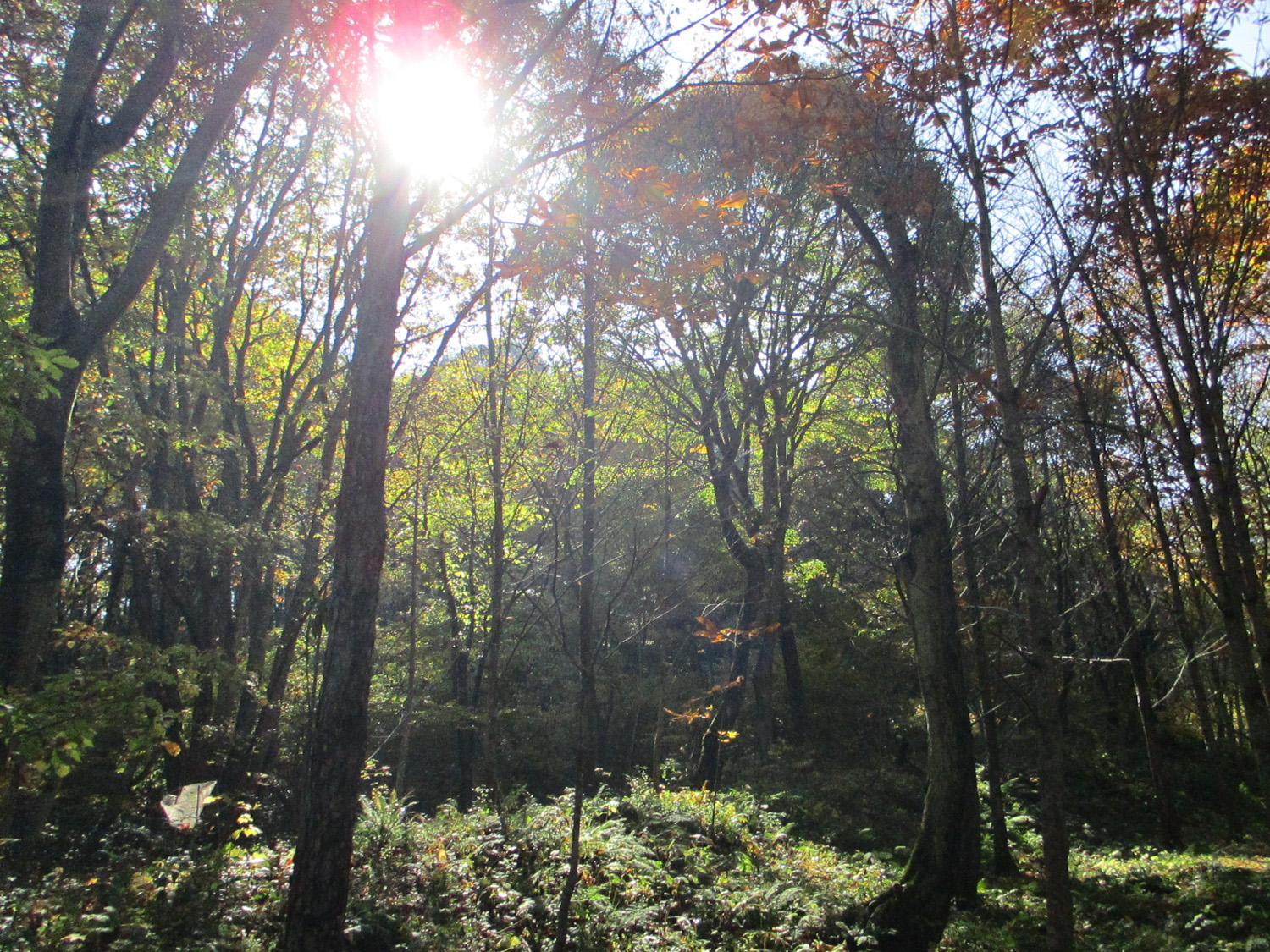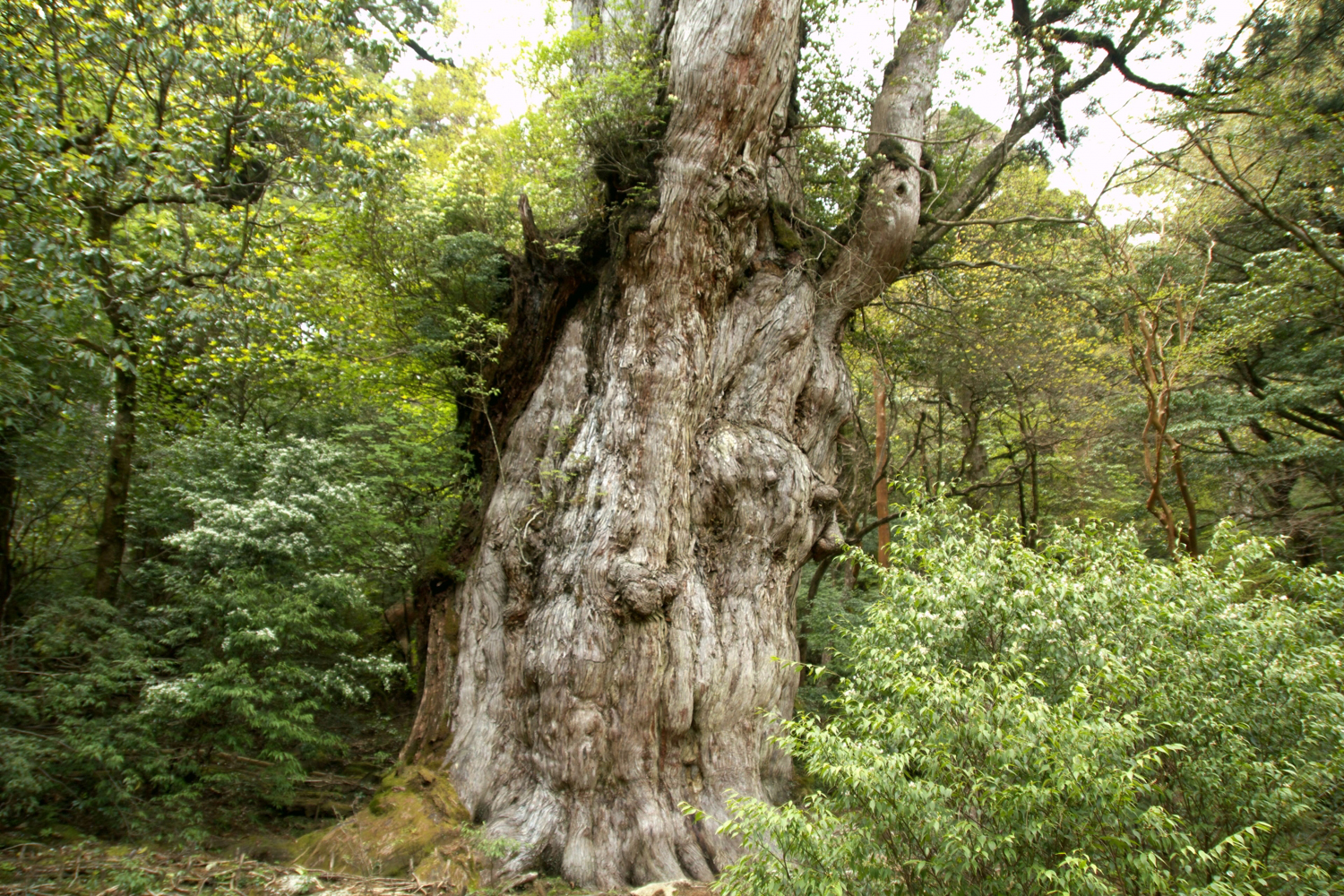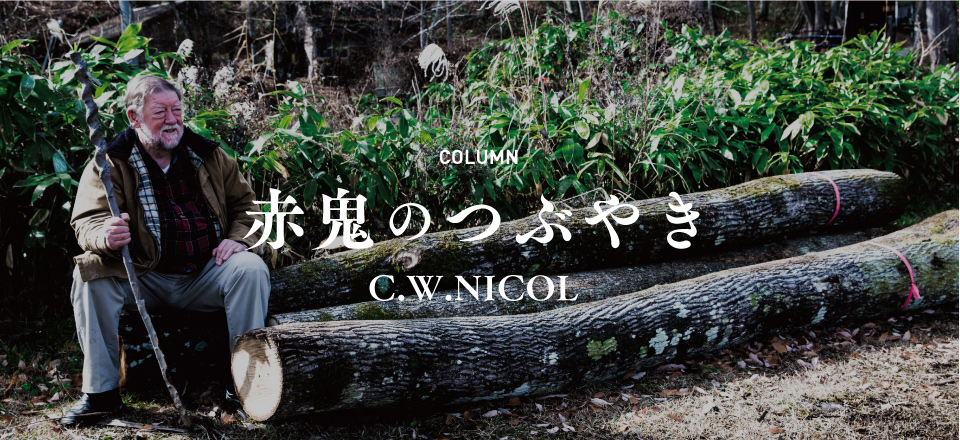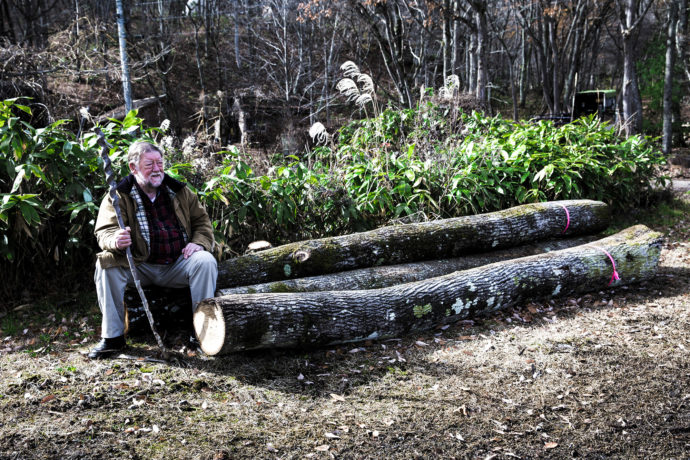Column
【赤鬼のつぶやき C.W.ニコル】クヌギ(SAWTOOTH OAK 学名:Quercus acutissma)
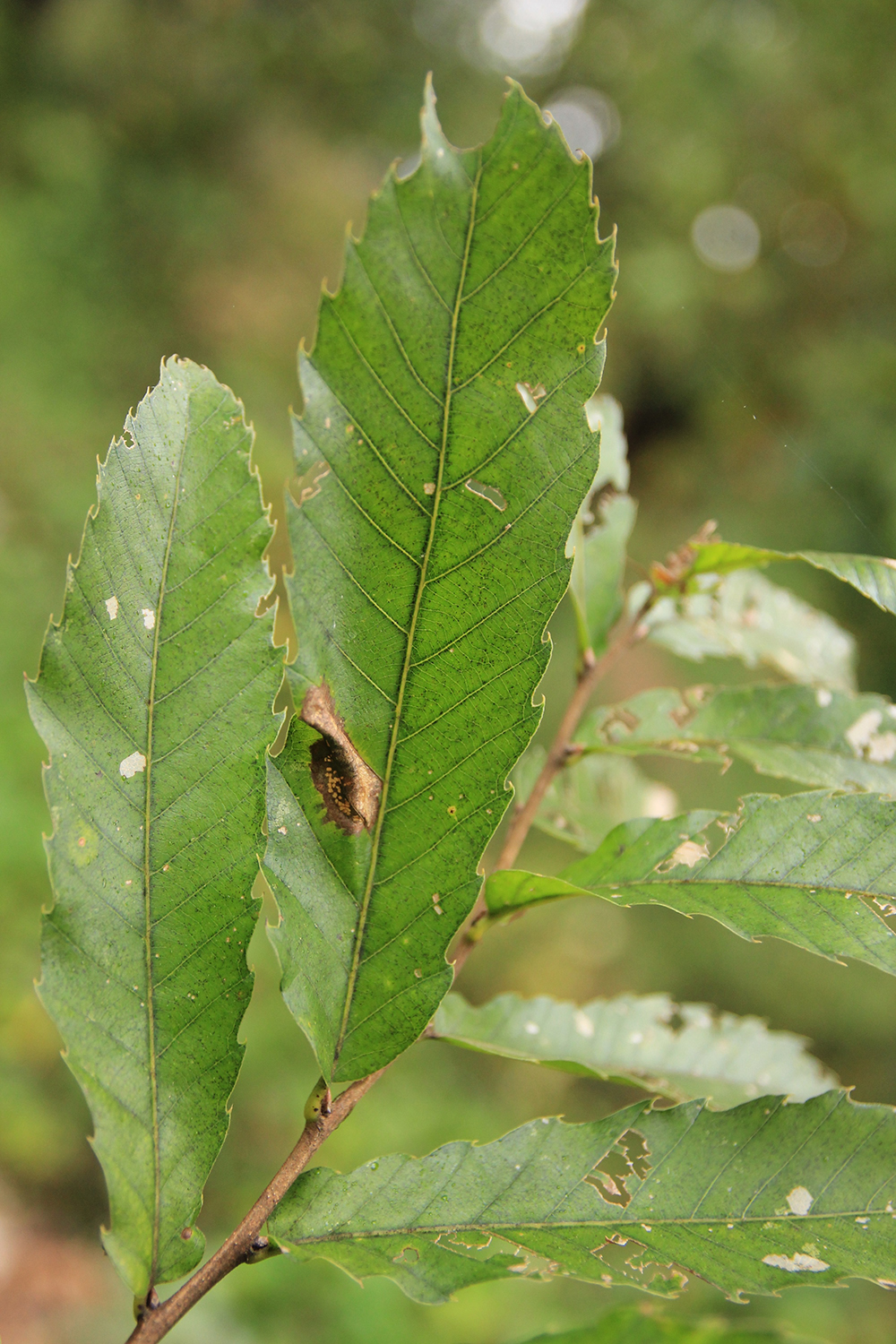
クヌギはもともとアファンの森にはありませんでしたが、日本であればいたるところにある、おなじみの樹です。また、中国、韓国、チベット、インドシナ半島やヒマラヤに自生しています。丸々と太った形のドングリにはとげとげとした質感のカップがかぶさっていて、まるで毛がふさふさと立っている小さな帽子のようです。葉は細長くて鋸歯状です。成長がとても早く、大量のドングリが実ります。アメリカでは野生動物の食用に、もしくは木材として用いるために植えられました。しかし、クヌギのどんぐりはとても苦く、リスやクマは他のドングリのほうを好んで食べます。クヌギを食べるのは、カケスのような鳥ぐらいです。 木材は硬くて、木目も魅力的です。でももろく、圧によって欠けてしまいやすいため、建材や木工細工には不向きとされ、アメリカでは柵を立てるときに使います。
アファン財団の設立のため、森の主要なエリアを財団へ寄附したのは2002年のことです。森の番人だった松木さんはもう引退してしまいましたが、ありとあらゆる種類の樹について話をしましたし、気候変動によって雪国にあるアファンの森の自然にとって、これから50年の間に何が起きるかも語らいました。アファンの森には、コナラとミズナラというカシの仲間が生えていました。 このように日本にもともとあるドングリの実がなる樹種が、気候が温暖化する今後も育ち続けるかどうかを見きわめるために、ある区画をゾーニングして、クヌギも植えてみようと決めました。わたしたちは財団として活動をするようになっために、森に自生していない木を植えることについては専門家が議論をすることになりますので、最終的に植える判断ができたときは嬉しく思いました。
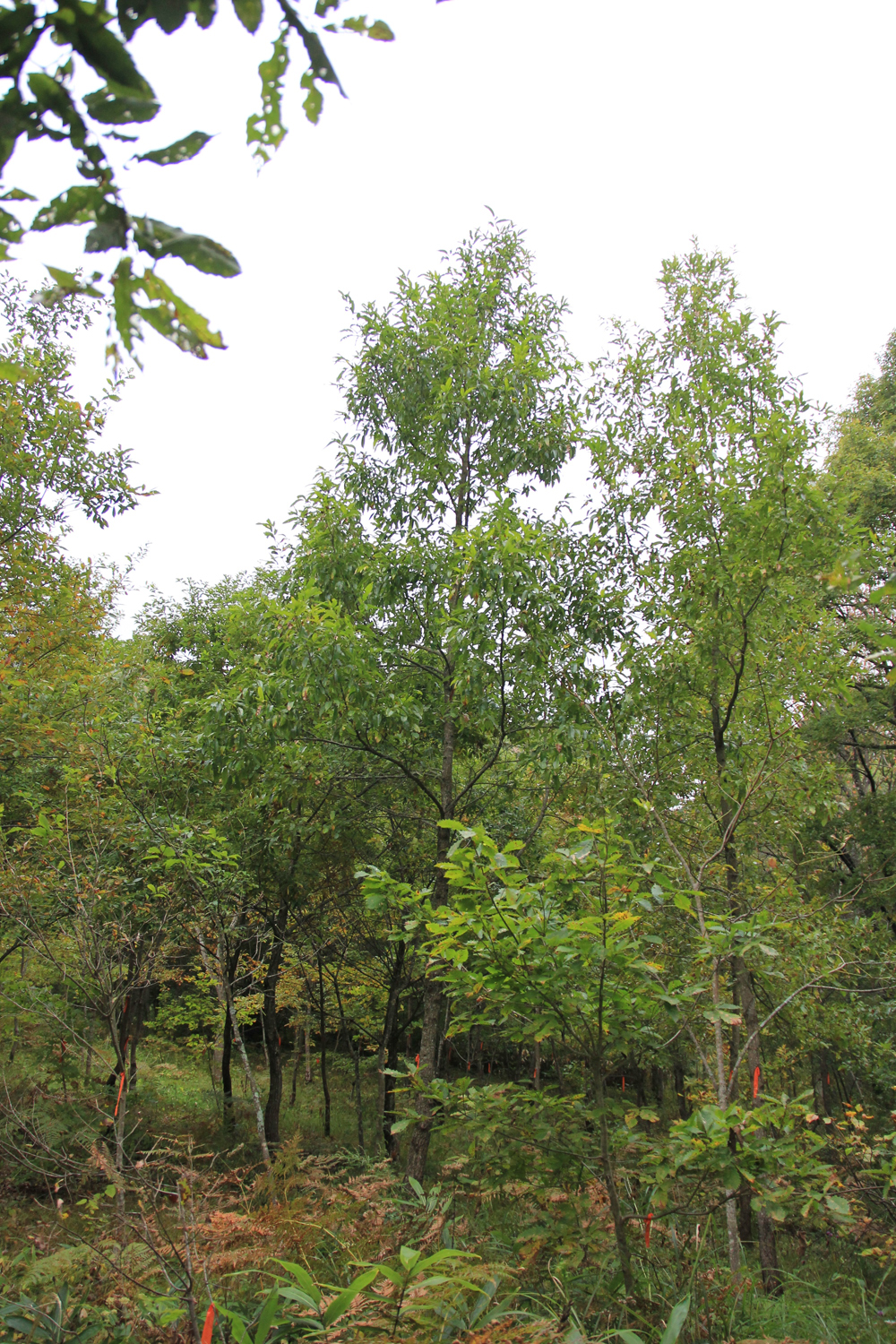
最初に植えたクヌギは、冬の間にネズミに根をかじられたために数が減ってしまいました。かじられたあとになんとか命をつないだ木も、成長を続けることはできませんでした。でも狙いを定めて探すことができれば、私たちの森でも小さなクヌギの木を見つけられるはずです。50年以上の年月が経つ頃には、ドングリの実をつけるほど大きな木に成長するものもあるはずです。
アメリカでは、その場所にもともと生えている木とクヌギが、競い合ってしまうという問題が起こることがあります。もしそうなることがあれば、薪にしてしまえば良いのです。アファンの森では、いつも薪が不足していますから。
気候変動のために降雪量は減少しています。雨季も以前よりも早く終わっているようです。
C.W. ニコル
2018年7月
写真提供:C.W.ニコル・アファンの森財団
KUNUGI – SAWTOOTH OAK (Quercus acutissma)
Kunugi is not a native tree for our Afan woodland, but it is a very common tree in other parts of Japan. Kunugi is also native to China, Korea, Tibet, Indochina and the Himalayas.
The acorns are round and fat, with distinctive bristly cups, like little fuzzy hats. The leaves are narrow, with sawtooth edges. It grows very quickly and produces bumper crops of acorns. For this reason kunugi were planted in the USA, for wildlife and for timber. However, although jays will eat the acorns, squirrels and bears prefer other acorns because kunugi acorns are extremely bitter. The wood is very hard and has an attractive grain, however it is also brittle and tends to crack under pressure. Because of this sawtooth oak wood is not preferred for construction or woodwork. In the USA it is mostly used for fencing.
I donated the core of the Afan Woodland Trust land in order to create the trust in 2002. Prior to that our now retired forester Mr. Matsuki and I talked about all kinds of trees and about what might happen in fifty years or so if climate change should alter the nature of woodland here in snow country. We have basically two native oak trees in Afan, konara and mizunara. We decided to plant kunugi in a designated area to see if it would survive and to have it as a potential acorn-bearing tree should warming of the climate make it difficult for our native oaks. Since we became a trust the experts would argue against non-native (even if they are Japanese) trees, so I’m glad we did it when I made the final decisions.
The kunugi we planted were reduced at first by mice gnawing on the roots during winter. Some trees survived, but they do not thrive. However, you can see small kunugi trees in our wood if you know what to look for. Perhaps in fifty years or more a few of them will grow into big, acorn-bearing trees.
If they become a problem, (as they have in America because they compete with native trees), then in Afan we will always have a demand for firewood.
As for climate change, we have seen a decrease in the total snowfall, and it seems that the rainy season ends earlier than before.
C.W.Nicol
July 2018
C.W.ニコル
作家・1940年イギリス南ウェールズ生まれ。1995年日本国籍取得。カナダ水産調査局北極生物研究所の技官・環境局の環境問題緊急対策官やエチオピアのシミエン山岳国立公園の公園長など世界各地で環境保護活動を行い、1980年から長野県在住。1984年から荒れ果てた里山を購入し「アファンの森」と名づけ、森の再生活動を始める。2005年、その活動が認められエリザベス女王から名誉大英勲章を賜る。2011年、2016年に天皇、皇后両陛下がアファンの森をご視察された。


